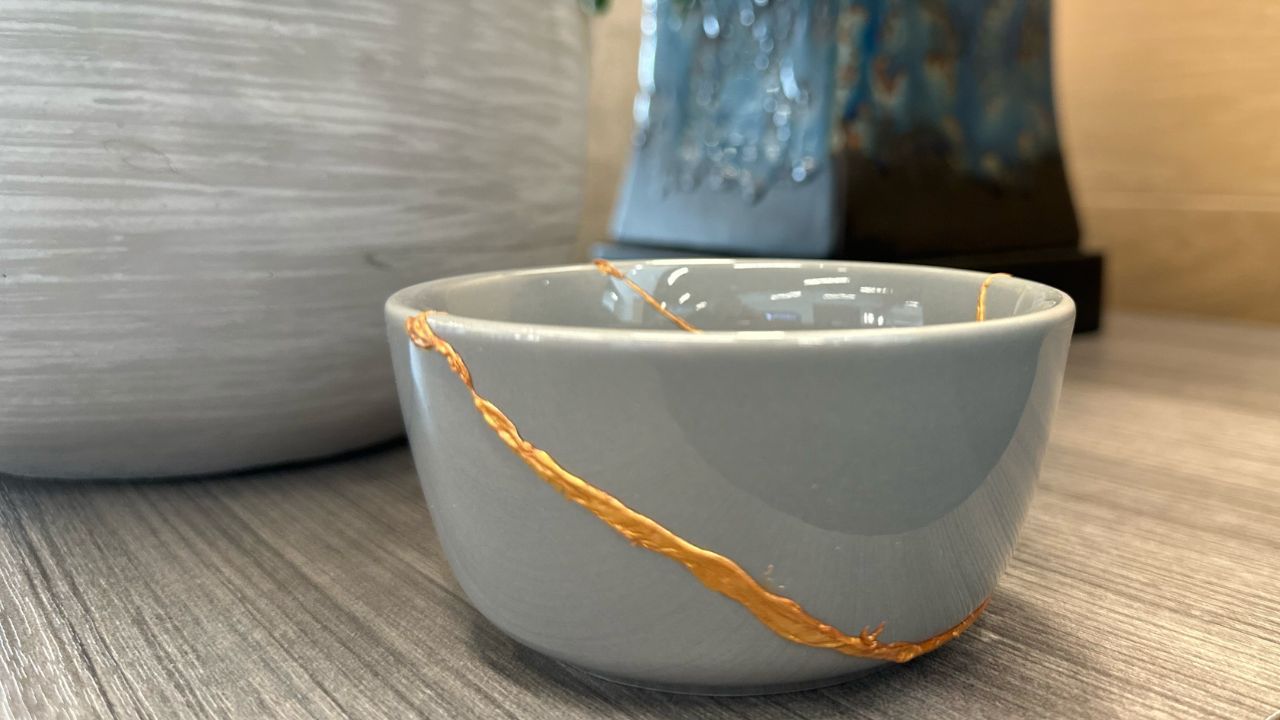Celebrating the Scars: Embracing the Art of Resilience
Jun 07, 2023
In life's vibrant mosaic, experiences of profound loss and grief can leave us feeling shattered, as though our existence has been fractured into countless tiny shards like a cherished piece of pottery knocked off a shelf and left in fragments on the floor. These moments can be so crushing and all-encompassing that it seems as if our narrative has been abruptly interrupted, our life story coming to a premature end. But what if we could find beauty in this shattered state? What if these cracks and fractures, these seemingly unbearable places of grief and loss, could enhance our life's journey rather than halt it? Herein lies the transformative concept of Kintsugi.
Kintsugi is an ancient Japanese art form, a practice that embodies resilience and renewal. Its name translates to 'golden joinery,' a nod to the process of healing that it symbolizes. When a piece of pottery is broken, instead of discarding it or masking the damage, Kintsugi artisans meticulously piece it together using a special lacquer mixed with precious metals like gold. The result is a piece of pottery that is not merely repaired but metamorphosed into something even more beautiful than before - its cracks are not concealed but highlighted, celebrated, and honored.
This artistic practice offers a compelling metaphor for navigating grief and loss. Much like a Kintsugi-repaired artifact, our lives can feel shattered and scattered when we face profound loss. However, we can mend these broken pieces, not by concealing the cracks but by illuminating them, recognizing them as integral chapters of our life's narrative.
Loss can make us feel like the damage is irreversible, our lives forever tarnished. When we experience a loss, it is normal to feel overwhelmed by the task of rebuilding our lives. However, we must remember the lesson of Kintsugi: our story is not yet finished. Despite the void left behind, we can find strength in knowing that we can still create a beautiful future.
Post-loss, our lives will inevitably be different, much like a repaired piece of pottery will never be a perfect replica of its original state. But this doesn't mean it can't be beautiful, even more so. The gold-filled cracks of a Kintsugi pottery piece make it unique and precious. Similarly, our 'cracks' and 'scars,' born of grief and loss, imbue our life stories with a unique, profound depth.
The journey through loss requires self-compassion, akin to the Kintsugi artisan who carefully reassembles each broken piece with respect and care. Pain is necessary for healing. It helps us rebuild our lives by turning our experiences of loss into golden threads that weave into our being, making us stronger and more resilient than we ever thought we could be.
In this transformation, a glimmer of hope surfaces. Just as Kintsugi pottery is not merely 'fixed' but utterly transformed, so are our lives through grieving. We develop resilience, finding beauty and strength in our repaired cracks. These golden scars prove our capacity to endure, heal, and continue growing.
As Kintsugi teaches us, we should see our grief and loss not as an end but as a catalyst for transformation. We must allow ourselves to grieve, feel the pain, and gradually begin the reconstruction process. In doing so, we should celebrate our scars, not hide them, for they are the golden seams narrating our tale of resilience. Through this understanding, we can start to appreciate the renewed beauty of our lives, rich with the promise of hope and the power of resilience.



